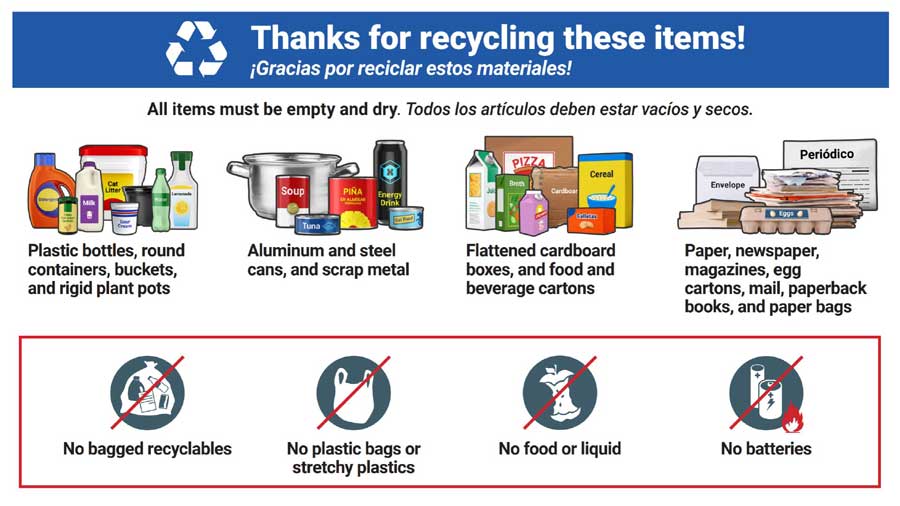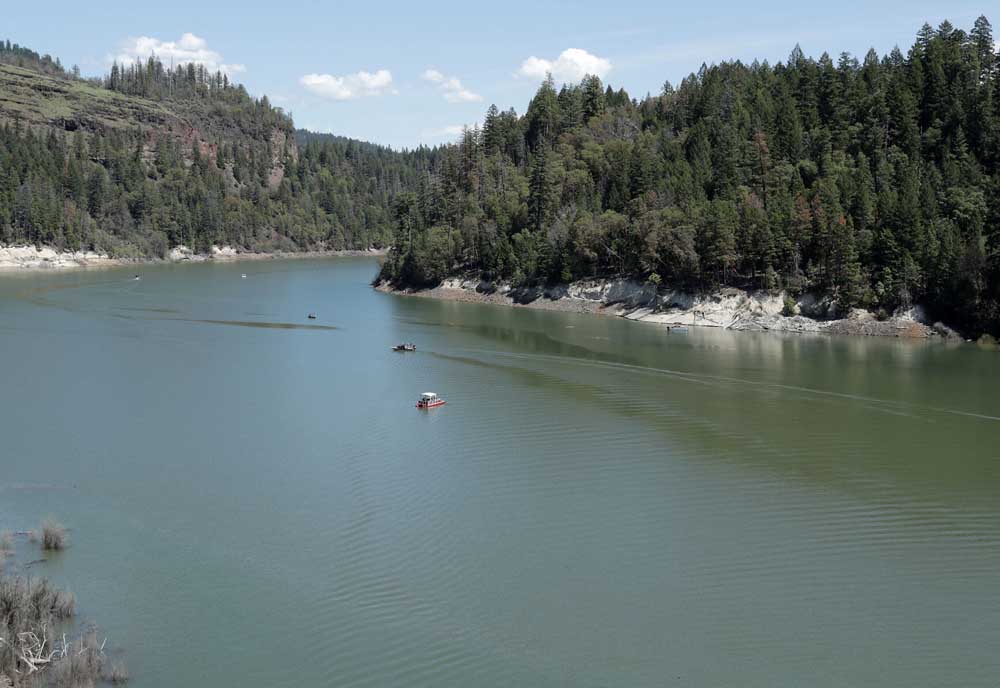Southern Oregon wine growers plan for a changing climate
Published 5:45 am Tuesday, May 2, 2023

- Dana Campbell Vineyards owners Paula Brown and Patrick Flannery share wine and a view at their tasting room near Ashland.
Local wine executives are cautiously optimistic that wine growers in Southern Oregon will be able to navigate climate changes successfully.
Among them are Craig Camp of Troon Vineyard, Edward Kerwin of Belle Fiore Winery, Dan Marca of DANCIN Vineyards, and Paula Brown and Pat Flannery, owners of Dana Campbell Vineyards. They believe climate change has potential upsides as well as downsides.
That is the assessment of Roseburg winegrower Greg Jones, as well. An atmospheric scientist, wine climatologist and CEO of Abacela Winery, Jones spoke April 13 at Southern Oregon University as part of the Friends of Hannon Library speaker series.
Jones discussed how weather events, variability and long-term structural change can result in crop risks, production problems and suitability challenges — but also how they can be a plus in some situations.
“Wine regions have developed worldwide where the weather and climate were most conducive,” Jones noted. “Yet the weather and climates of wine regions vary greatly.”
Kerwin can speak to the pluses and minuses of climate change. His vineyards near Ashland were among those affected by drought and lack of irrigation water during the 2021 and 2022 seasons.
“Yields were down by 50% over traditional harvest years,” he said, “but those vintage wines will be wonderful — concentrated and full of flavors.”
Belle Fiore’s grapes got about five weeks of water from the Talent Irrigation District in 2021 and about seven in 2022.
“That meant that grape clusters had to ripen in August, September and October with no further irrigation water,” Kerwin said. “This makes for somewhat desiccated, pea-sized grapes.”
Because the grapes were smaller, they had a higher skin-to-juice ratio. Most of the red grape flavor ingredients are in the skins.
“Even the whites from 2021-22 are delectable,” he said. “Every taste is amazing, like drinking a nectar.”
Some of those whites are bottled, while others, like chardonnay, are still aging in barrels, as are the reds.
Why do small berries have “more” skin? It is in the geometry of the spheres. Juice in the body of the grape increases or decreases in relation to the cube of the radius, while skin increases or decreases in relation to the square of the radius. Thus, when the size of the grape is smaller, the decrease in the amount of juice is proportionately more than the decrease in the amount of skin.
A 1-acre block of Belle Fiore’s pinot noir, for example, which normally yields 4 tons of juice, yielded only 1.5 tons of juice in 2021 and 2022, with about the same number of grapes and not that much less skin.
The downside? Production declines resulted in a scarce supply of those special wines.
Marca, proprietor and winegrower at DANCIN, said he is impressed with how vines acclimate to changing conditions.
“Nature does a wonderful job adapting,” he said. “While it has been warmer for sure, our original estate vineyard is dry farmed, so the lack of water has had minimal impact at this point. Grape quality has actually improved in the last several years.”
The future may bring challenges, but he believes growers will adapt.
Camp, the Troon general manager, sees climate change as a threat and an opportunity.
“A warming climate does make it easier to ripen fruit,” he said. “However, in the long run, it can disrupt the industry. Farming the traditional varieties that make regions famous might become impossible.”
Troon had to replant its entire vineyard due to red blotch virus, which provided an opportunity to rethink the varieties to grow.
“Our replanting strategy was designed to consider climate changes,” Camp said. “We feel we are well prepared for a warming climate.”
They chose varieties like mourvèdre, carignane, grenache and other southern French varieties. “They are well suited for a climate that is both warmer and drier,” he said.
Dana Campbell owners Brown and Flannery said lack of winter water is stressing their vines, but they’re hopeful about the future.
“I’m typically pretty optimistic,” Brown said.
Her optimism is based on two things: drought is cyclical, and solutions can be found to save and conserve water.
“We need to look at piping irrigation canals to maximize water delivery and not allow water to be leached into earthen canals,” she said, “or evaporated along the delivery routes.”
One unwelcome climate effect impacted wine grapes indirectly.
“Lack of water and the late freeze in May of 2022 extinguished much of the other fruit production, including wild fruit,” Flannery said.
“In our small orchard, we had no plums, apples or figs that many other animals thrive on. As a result, much of our potential harvest was decimated by birds, raccoons and bears, all trying to find something to eat.”
Kerwin, at Belle Fiore, said his vineyard uses drip irrigation, which helped keep grape quality high in the low water years of 2021-22, despite the low yields.
“Water supplies look pretty good for 2023, with TID reservoirs such as Emigrant Lake and Howard Prairie Reservoir looking, so far, to reach 50%-60% levels,” he said.
Although Belle Fiore grows more unusual, lesser-known varieties as well as the more familiar ones, plans are to plant more cabernet sauvignon and Barbera grapes in 2024.
“These varieties have been customer favorites and seem to grow well in the Rogue Valley,” Kerwin said.
Coincidentally, one of the experts Brown and Flannery consulted in the initial planning stages for their Ashland vineyards was the wine climatologist who spoke at Hannon Library.
“We received great advice early on from Greg Jones,” Brown said, “and planted grapes that do well in warmer climates.”
Dana Campbell uses propane-driven fans to counter frosts.
“That has saved us in the spring during bud break,” Flannery said, “and even sometimes in the fall before our latest grapes have been harvested.”
Troon Vineyard has installed a weather station system that also monitors soil moisture at various depths.
“These stations are positioned in multiple locations throughout our farm,” Camp said. Data are used to minimize irrigation requirements and to predict the weather for Troon’s mesoclimate in the Applegate Valley. “You cannot have too much data,” he said.
Kerwin said Belle Fiore employs no special weather monitoring.
“A warming climate does make it easier to ripen fruit. However, in the long run, it can disrupt the industry. Farming the traditional varieties that make regions famous might become impossible.”
— Craig Camp, general manager of Troon Vineyard
“Each growing season is so different. Depending on the year, dates vary for bud burst, veraison (onset of ripening) and harvest,” he said.
What about wildfire smoke?
“The only effect we have seen,” Camp said, “is that high-level smoke can slow ripening by filtering out sunlight. This is not always a bad thing by our standards, as we prefer slower ripening.”
Jones described the climate trends for Oregon from 1948 to 2016 during his Hannon Library presentation.
“Growing season temperatures are warmer overall,” he said, “but the number of days below freezing has increased.”
Across all locations, minimum, maximum and average growing season temperatures are up from 2.0 to 3.1 degrees Fahrenheit. Ripening period temps are up and the number of growing season days with highs greater than 95 degrees (5-15 more) has increased.
On the other hand, across all Oregon regions, there are 18-28 more days below freezing annually, 7-15 more in the spring, and 3-8 more in the fall.
Jones said these changes can affect vine growth and how vines harden and become stronger.
“All varieties have inherent climatic thresholds for optimum quality and production characteristics,” Jones said.
“And all varieties are grown across a range of temperatures, with wine style differences across the range. Varieties can be found grown outside these bounds, but are often under- or overripe. They’re also very limited in production, or focused on bulk markets,” he said.
Pinot noir does best in a cool to intermediate environment, or with temps in the range of the high 50s to low 60s. Tempranillo thrives in an intermediate to warm environment, ranging from the low- to mid- 60s.
Wines produced in areas on the low end of the range have lighter body, lower alcohol, higher acidity and brighter fruit; on the higher end of the range, fuller body, higher alcohol, softer acidity and darker fruit.
“Pinot noir exhibits one of the narrowest climatic niches for premium quality production,” Jones noted.
Once a region’s climate moves firmly into another range, the only alternative may be to switch to more suitable varieties.
Belle Fiore’s Kerwin predicts that will happen.
“Some wine varieties that could barely grow in the Rogue Valley in prior years, like cabernet franc and nebbiolo, may actually thrive with a few more warm days each spring and fall,” Kerwin said.
The Portland area, for instance, traditionally grows primarily fast-ripening varieties such as pinot noir and chardonnay. It may be able to grow more varieties in the future.
Climate change is just one of many factors putting pressure on the wine industry.
“Other factors include economics, growing demand but changing demographics, challenges from other beverages, new markets, new consumers, new styles, and changes in the tastes of wine writers and raters,” Jones said.
He said research and development will help provide more tools for wine growers, as will better and more information.









